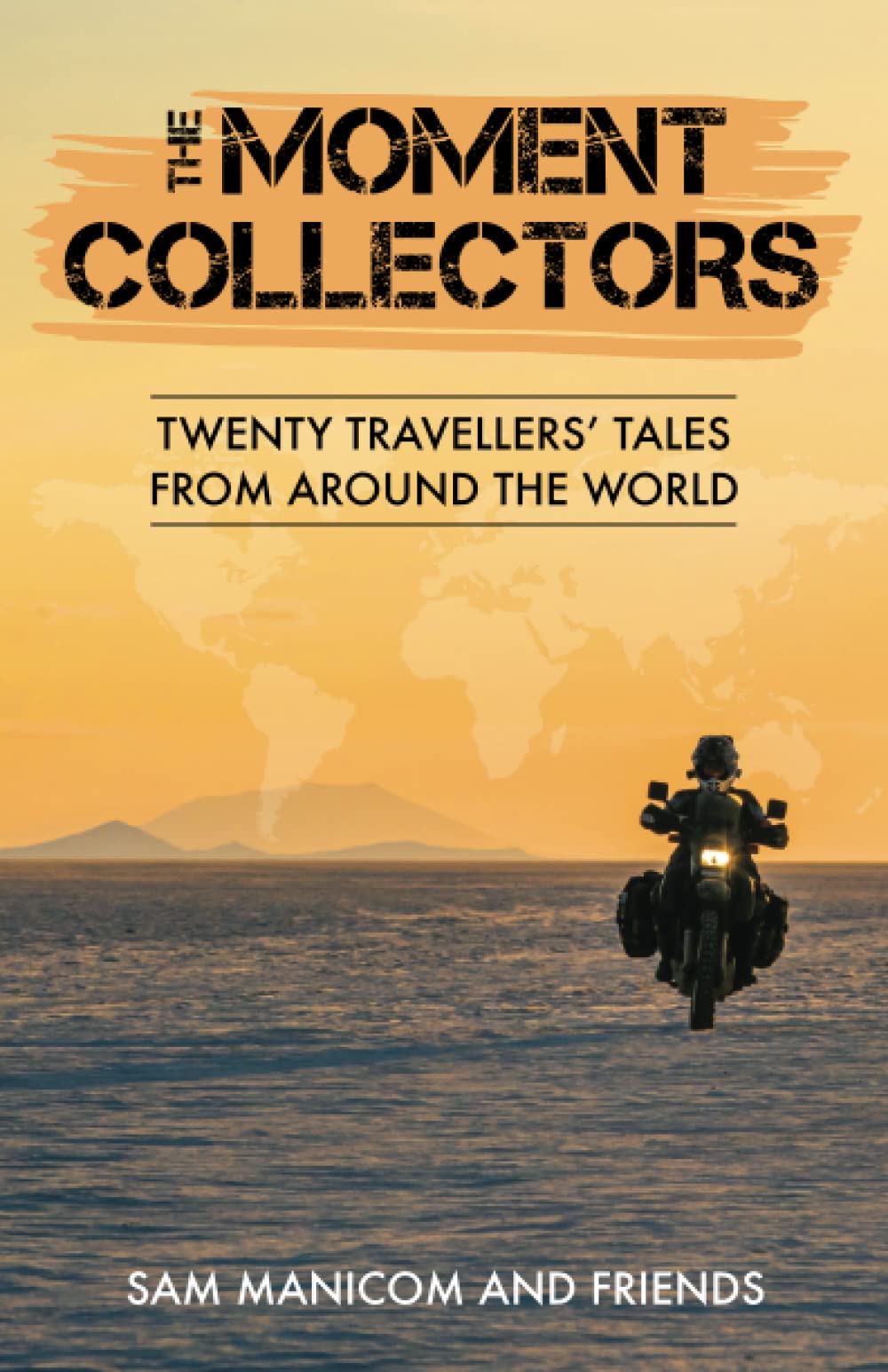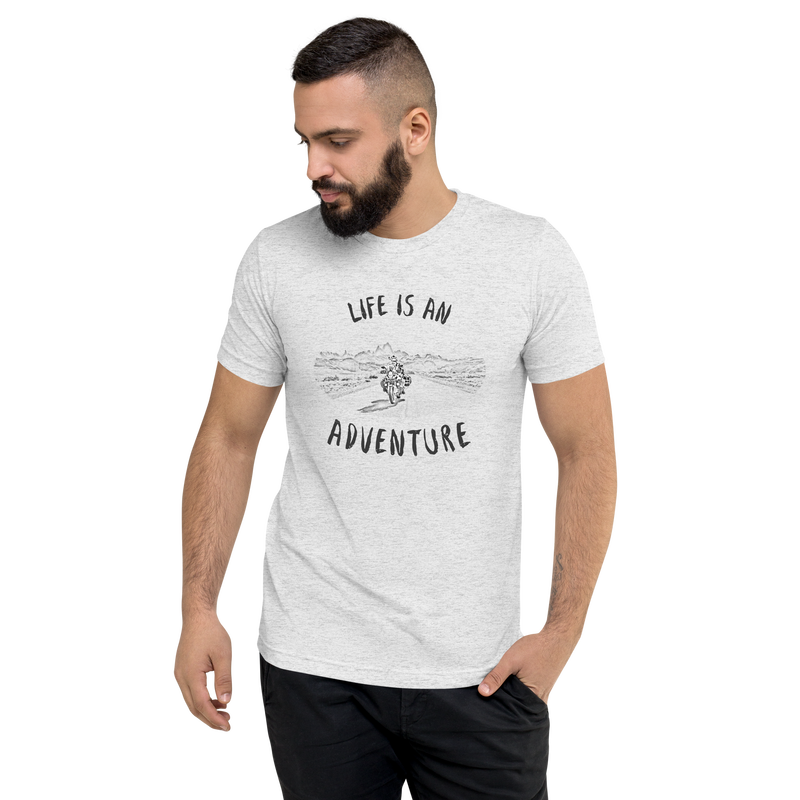By MarisaWe entered Bolivia a little more than a week ago, excited for this new country of dynamic culture, mountains, and jungle. And to celebrate the holidays, we wanted to be in the white-washed colonial city of Sucre to meet fellow motorcycle travelers and friends for Christmas. That gave us nine days to get there from the Peruvian border and see all the fantastic sites in between. So we were a little rushed, but it didn't seem to be an impossible task. At least in the beginning. Our first night in Bolivia was spent at Copacabana, the border town with Peru on the shores of Lake Titicaca. It's a favorite spot for backpackers and is maybe one of the nicer border towns in the world. It had crisp views of the blue lake along with little vegetarian and tiki-type restaurants dotting its main strip, but Tim and I felt it to be overpriced for what we knew Bolivia to cost. So we stayed briefly, and then immediately headed inland. To get anywhere inland from Copacabana, you have to first drive along a lovely paved road that hugs the inlets and curves of Lake Titicaca (I think the Bolivian side is the more picturesque side of the lake, sorry Peru). And then you are forced to put your vehicle on a rickety ferry that crosses Lake Titicaca's Tiquina Strait. Made of warped wooden boards and not much else, this “ferry" took about a half hour and cost us only 5 Bolivianos a person ($0.72) but you get what you pay for. It's not a very far journey, and I think it'd just be easier to build a bridge, but it was a great introduction to the reckless and haphazard adventure that Bolivia was going to be. We even passed another ferry along the way with a guy in it who was literally bucketing out his flooded ferry one bucket-full at a time. I was thankful that we stayed afloat the whole ride. Our first stop after Copacabana was La Paz, the Bolivian seat of government and the highest capital in the world (elevation is at 12,000 ft./3,650 meters). Though we didn't explore too much, we immediately felt that it was a fun city with lots of culture and views everywhere. And the best part was that because of the surrounding hills, there are cable cars running all over the city called teleféricos, allowing people to sour above the traffic below while taking in its cloud-touching vistas. From La Paz we decided to ride along the infamous route northeast called Death Road, which my mother wasn't too happy about. Ruta de la Muerte, a.k.a. Yungas Road, used to have a horrific death rate due to its narrow cliffside two-way traffic, plus it was the only way for anyone to get to the town of Coroico. It was so bad, that by 2006 one estimate said 200-300 travelers were killed a year on it. But after putting in some improvements such as guard rails, and constructing a new, less-deadly road to Coroico, only one person or so dies every few years on it now. So off we went to tackle the Death Road, but on the way, our horn went out (for the millionth time, it keeps doing that despite all of Tim's “fixes"). And as a semi-truck came barreling around the turn toward us, missing us by just a foot, Tim said to me, “Wouldn't it be horrible if we died on the road right before Death Road?" Thankfully we didn't die on either road, and to be honest, I think calling it Death Road is a misnomer these days. It's actually a very well-maintained gravel road with a gradual descent (you have to pay to go on it, 25Bobs a person, so I'm glad to see the money goes to something). And considering the only real traffic are downhill cyclists, it's not that dangerous anymore. It descends from La Paz's high altiplano elevation down into the tropical jungles of mist and waterfalls, which makes it a gorgeous ride. In fact, I think the road should be called Scenic Jungle Road, and then nobody would get the wrong impression of what it's like. Ironically, the real adventure did not begin for us until after Death Road. From Coroico we thought we'd head southeast to Cochabamba and finally to Sucre from the most direct way possible. Even though Google had us going back to La Paz and then taking the main highway, we thought, “Hey, there's this other road that goes straight there. Why not take that?" Well, I now know the answer to that. This little squiggly dirt road that goes along Bolivia's northern foothills near the Amazon might be a great ride during the dry season, but in December during the rainy season, it becomes a muddy slosh pit. Talk about Death Roads, this Route 25 was one of the worst we've been on. Amidst all the puddles and soggy streets, camping was not going to be a fun option. So we tried to stay the nights in any cheap hotel we could find, and ended up laying in moldy beds and listening to the thunder and downpour, all the while worrying about how we were ever going to make it through the mud the next day. I began to doubt we would ever get to Sucre for Christmas. And then on our way to the village of Licoma, Tim suddenly pulled over and yelled, “The front tire's flat!" Sure enough, it was completely flat and we were riding on the rim. But what's strange was that after much inspection, we could not find the puncture wound. And what's worse, we definitely could not pump it up again with our little travel pump. We knew this moment would come eventually: a time when the bike would become so immobile, we'd have to either separate, or abandon the bike. Luckily, Licoma was just 20 minutes away, so I decided to hitch a ride with some friendly passerbys, and take the tire to a gomería in Licoma. For once, things worked out better than I had expected, and everything went to plan. I got dropped off at a tire shop, the guys there pumped it back up and came to the conclusion that nothing was wrong with it. Maybe it went flat because a small rock had gotten between the rim and tire, maybe the pressure was too low, who knows. I was able to pay the tire man's neighbor for a ride back up into the mountains where Tim was waiting with the immobile bike. We got the tire back on, said farewell to our new friends, and made our way to Licoma relieved and ready for a good night's rest. Of course it stormed worse than ever that night, and all I could think about laying in that moldy bed of the hotel (it was really just someone's house with an unused room of mildew) was how I wanted pavement. Glorious, wonderful pavement. And Christmas in Sucre with friends and non-moldy beds. As predicted, the morning after was muddy mayhem, and it became a slip-n-slide down the mountain. I have to say that Tim did such a great job keeping us upright, he shall forever be known in my book as the Mud Master. And there was hope on the horizon. We decided to turn off of Route 25 as quickly as we could, and went through a stunning valley around the town of Quime before coming to pavement. And from there on out it was smooth sailing until the city of Cochabamba, where we met with our Bolivian friend, German. German gave us a warm welcome to Cochabamba, a delightful city with the tallest Christ statue in the world (yup, it's taller than the one in Rio). And we enjoyed seeing the oldest church of Bolivia, built in 1521. From Cochabamba we spent two days riding lovely roads to the city of Sucre: they were paved and wound through the rocky countryside of spring green scrubland. There were two problems with this road: the trash, and the amount of women and children begging along the sides. It broke my heart to see them waving and shaking their hands and hats at every car that passed, and I was shocked to see so much destitute poverty around every turn. There were hundreds of them in the cold, in the rain, and in tattered clothes. I know that Bolivia is making advancements, but for many people, it has leaps and bounds to go. At last we arrived in Sucre, and just like my dreams, we had a glorious Christmas spent with the Haks, Twoifbyland (another motorcycle couple), our Norwegian friend Single Piston Vikings, and Rick, a motorcycle adventurer from California. For a couple of travelers far from home and with no family around, we're feeling pretty fortunate this year to be surrounded by such great people, scenery, and food. We wish you all a happy holidays and a Happy New Year, and I hope it will be just like in your dreams. Become a Patron! |
Follow UsRide with us from Chicago to Panama!
2Up and Overloaded Get inspired by the tale that started it all:
Maiden Voyage 20 author's tales of exploring the world!
The Moment Collectors Help us get 40 miles further down the road with a gallon of gas!
Become a Patron for early access to our YouTube Videos!
Subscribe to our YouTube Channel!
Subscribe to our Blog by Email
|
2Up and Overloaded
Join our clan of like-minded adventurers...
Proudly powered by Weebly
Designed by Marisa Notier



































